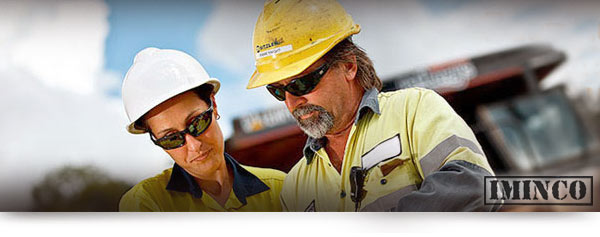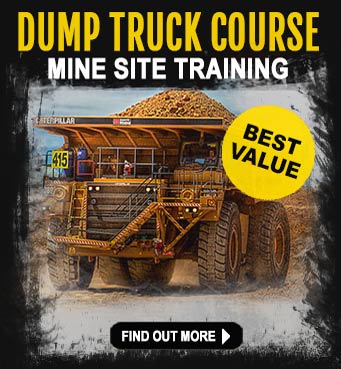 Mining in Australia, despite having tough legislation around safety training and mining induction, is still battling to keep mine site fatalities to an absolute minimum.
Mining in Australia, despite having tough legislation around safety training and mining induction, is still battling to keep mine site fatalities to an absolute minimum.
New starters in the mining industry, must be aware of the potential hazards and risks they will face as part of their daily activities – no matter what type of mining job they do.
Mining Contractors The Biggest Risk
A recent report has highlighted that contractors to the mining industry present the biggest risk in terms of fatalities in the workplace. Mining safety in Queensland has reported that 90 percent of fatal accident on a mine site will involve contractors.
That’s a high ratio compared to full-time employees. This has now prompting a new review of safety training procedures, risk assessment and a total rethink of mining induction, especially for contractors.
Queensland Mine Safety and Health Commissioner Stewart Bell said contractors working on mine sites all over Australia, should have access to the same training, safety procedures and processes as full-time employees. Contractors are generally assigned to mining projects and tasks that� are out of the ordinary and involve a higher level of risk than would normally be needed. Examples of this are contractors who are required to work at heights or work in teams to fix equipment underground or tight confined spaces.
Safety of contractors was not a management problem
Some managers took the view that because contractors were not part of the ‘company team’, their safety training and risk assessment was not their problem.
The report stated some mining operations tended to look at contractors and the associated risks as not being their responsibility. A recommendation was put forward calling for a contractor assessment by the mine management team, before allowing them on site.� Senior mine site managers have a legal responsibility to manage risk and prevent accidents in the workplace occurring. This applied to full-time employees as well as contractors.
This would mean checking to see which individual persons employed by the contractor had completed a mining induction course as well as have additional qualifications that were of an Resource� and Infrastructure Industry (RII) standard.
Once this was established, this would be integrated into the mine site`s safety and health management system. A formal record would then be kept in case of any accidents. This would have the effect of indemnifying (to some degree) the mining company should a contractor be injured whilst on their site.
Mining safety has improved dramatically over the last few years owing to government initiatives like the mining induction (standard 11) course.� However, many� contractors have been killed on Australian mine sites in 2013, indicating there is a lot of work to be done.
The Queensland mining sector had one of the best safety records in the world, there was no room for complacency.
There is a general consensus that it’s time to revisit the mining safety and induction training of contractors to the industry. The Queensland mining companies can’t become apathetic because every time a worker is injured or worse, killed – that’s somebody who’s not returning home to their family in the same condition they left for work.
There are massive implications for family members who have lost a loved on owing to a mining fatality. There’s not only the loss of a life to consider, there are the run-off effects like loss of income for a family, anger and grief counselling, the effect on children and the health and well-being of all concerned.
The mining industry has a responsibility to make sure everyone working on a mine site, no matter if they are a full-time employee or a contractor has access to the best safety and risk assessment/management programs.
Queensland Mining Fatalities
In the 12 months to June 30 2013, 2 people lost their lives whilst employed in the mining industry in Queensland. These 2 fatalities happened in an open-cut, surface mining operation. It’s not all bad news because the report stated that overall a reduction in injuries and reduced lost time due to accidents was encouraging.
Disabling and lost time injuries to workers in the Queensland mining sector fell from 1182 in 2011-12 to 947 in 2012-13. Subsequently the injury severity rate reduced some 33%+ from 302 million hours to 222 over the last year.
Accident reporting rate increases
The instance of high potential incidents by industry operators increased from 2390 in 2011-12 to 2406 during the period 2012-13. The mining sector has reviewed the increase in accident reporting as a positive step forward as it allows the Queensland mining industry and its many mining companies to decisive improvements.
The Queensland Government has an agenda to up the effectiveness of its mine safety and health processes with Natural Resources and Mines Minister Andrew Cripps publically announcing that “safety is the government`s top priority for the sector”.
Some of the changes in the Queensland government initiative to improve mining safety requires all mining operations to have a single safety and health management system that covers both company employees and contractors. They also made a recommendation to beef up the number of coal industry safety and health representatives from three to four.
Additionally, the new government mines safety framework includes changes that would see important safety roles at mine sites become statutory ones with a Board of Examiners competency certificate required before anyone could officially take up the position.
Mining Induction & Risk Assessment
The high instances of mining fatalities highlights the serious need for awareness of the hazards that all workers can be exposed to whilst working on a mine site. In Queensland the mining induction (recognised Standard 11) course is mandatory for workers who are seeking employment in the coal or metaliferous mining sector.
The mining induction course is very comprehensive and focused on key issues and skills building in areas of;
- Safety Compliance
- Mining Terminology
- WH&S Compliance
- Hazard Management
- Risk Management
- Record Keeping
- Emergency Procedures
- Fire Fighting
- Radio Communication
Mining induction RII Qualification
- RIIRIS201B� Conduct Local Risk Control
Hazard ID,� control and risk assessment and in a mining environment - RIIERR302A Respond to Local Emergencies
Prepare and respond to emergencies in a mine environment - RIIGOV201A Comply with Site Work Processes / Procedures
Access and apply site safety procedures, apply personal safety measures, maintain personal well-being, and complete relevant reports and forms - RIIOHS201A Work Safely and Follow OHS Policies and Procedures
- RIIERR205A Apply Initial Response First Aid
Assess the situation, apply basic first aid and complete incident reports - RIICOM201A Communicate in the Workplace
Identify, access and use work site communication systems and equipment, carry out work related communication, and complete written�documentation
Training courses and compliance management
The induction courses are run by an RTO (Registered Training Organisation) who have a legal obligation to train you to exacting standards as set out by the Australian government. RTO’s have to be fully compliant at all times, with regular reporting and reviews conducted yearly by the Australian government authority ASQA.
ASQA stands for Australian Skills Quality Authority and is the national regulator for Australia`s vocational education and training sector. Australia’s vocational education and training (VET) sector enables students of all ages to gain qualifications and specific skills to help them transition safely in the workplace.
The sole purpose of ASQA is to regulate all training courses and training providers (RTO’s) to ensure nationally approved quality standards are consistently being met.
Mining Induction course specifics
Depending on who you choose to do your mining induction course with, you may be required to attend a 2 or 3 day course. You will find courses being run in most major location around the country. Some RTO’s offer a 2-day mining induction course, where the course is shortened owing to student being allowed to complete a written assessment in their own time prior to attending the course.
This assessment is accompanied by a workbook that the student uses to build their knowledge. It’s a very effective way to allow people to assimilate themselves with the mining industry in their own time.
Statement of Completion & Statement of Attainment
For people who are not actively employed in the mining industry at the time their mining induction course was completed, under strict legislative rules they will have to engage in mining employment to complete the workplace activities portion of the qualification before they can officially complete and finish the course.
If a person completing the course is not currently employed in the mining industry, they will receive a Statement of Completion. Only when a person has found a job in the industry can the workplace assessment be completed and returned to the RTO; can an official Statement of Attainment be issued!
High quality training
Each RTO has an obligation to follow a set training plan and allow all student access to a feedback assessment process. The results of the feedback are submitted to the governing body managing the compliance and performance monitoring of training organisations.
The high quality training of individuals is taken very seriously by the industry, that’s why people looking to complete the mining induction (Standard 11), would be best to choose a reputable training organisation that specialises in mining and resource sector training.
Some courses you can do to increase your safety awareness
- Standard 11 Mining Induction� (recommended)
- Working at Heights� (recommended)
- Enter and Work in Confined Spaces (recommended)
- 4WD License or Light Vehicle Course. (recommended)
Reference: Mining Induction | Standard 11


